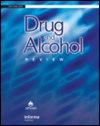Rotation from methadone to buprenorphine using a micro-dosing regime in patients with opioid use disorder and serious mental illness: A case series
Abstract
Introduction
Inducting buprenorphine from methadone has traditionally involved initial opioid withdrawal, with risk of mental state deterioration in patients with serious mental illness (SMI). Micro-dosing of buprenorphine, with small incremental doses, is a novel off-label approach to transitioning from methadone and does not require a period of methadone abstinence. Given the limited literature about buprenorphine microdosing, we aimed to evaluate the feasibility and safety of inducting buprenorphine in a series of patients on methadone with SMI.
Methods
For this retrospective case series, we reviewed the records of 16 patients with SMI at a Melbourne addiction treatment centre, from January 2021 to July 2022, who transitioned via micro-dosing, from high-dose methadone (>30 mg) to buprenorphine and depot-buprenorphine. Psychiatric diagnoses, mental state, other substance withdrawal, transfer success, transition time, opioid withdrawal symptoms and overall patient experience were collected via objective and subjective reporting.
Results
Methadone to buprenorphine transfer was completed by 88% of patients. Mental health measures remained stable with the exception of mildly increased anxiety. Median transfer time was 6.5 days for inpatients, 9 days for mixed setting and 10 days for outpatients. Most patients (93%) rated their experience ‘manageable’ reporting mild withdrawal symptoms. One patient met study criteria for precipitated withdrawal.
Discussion and Conclusions
This retrospective case series provides evidence that the use of a micro-dosing buprenorphine induction for methadone to buprenorphine transitions, including to depot-buprenorphine, has negligible risk, is tolerated by patients with SMI and is unlikely to precipitate an exacerbation of their mental illness.

 求助内容:
求助内容: 应助结果提醒方式:
应助结果提醒方式:


